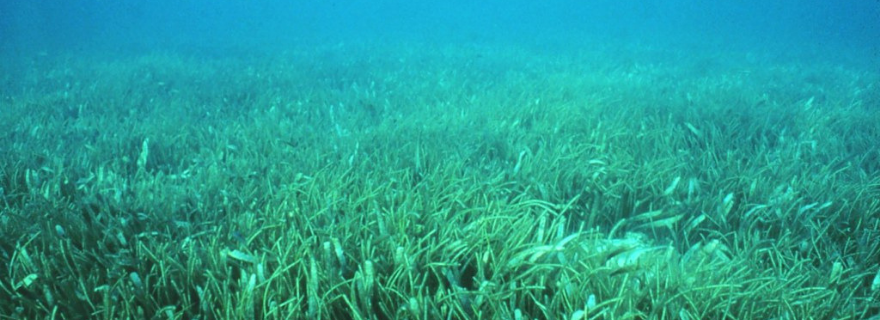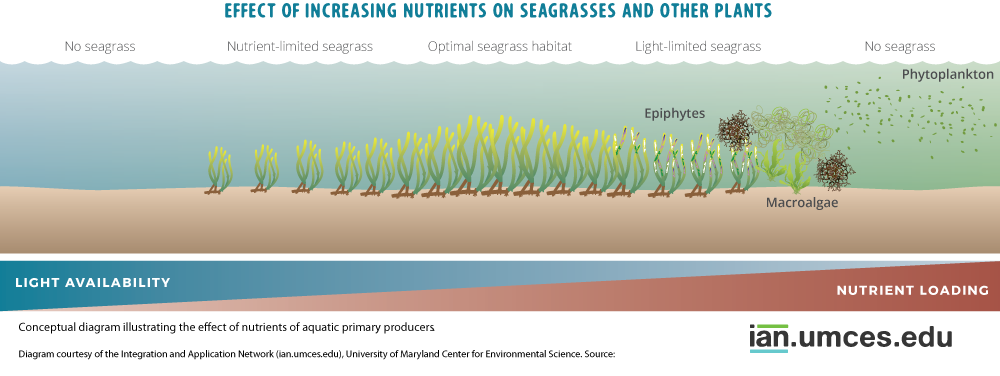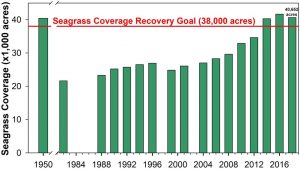
Despite heavy rains causing multiple sewage overflows in 2015 and 2016, Tampa Bay continued to exceed goals for seagrass acreage re-establishment when measured in late 2017 and early 2018.
Across the bay, seagrasses declined by 2.4%, or 1,104 acres, although the total acreage of 40,652 still exceeded the Tampa Bay Estuary Program’s ambitious goal of 38,000 acres set in the 1990s. The most significant losses were in Hillsborough Bay and Old Tampa Bay, areas which have historically been the most impacted by nutrients originating from stormwater and freshwater inputs.
The survey, compiled from thousands of aerial images taken by the Southwest Florida Water Management District (SWFWMD), was field verified at more than 800 locations.
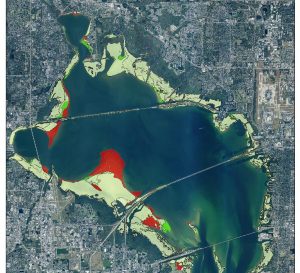
“The largest percentage lost was in Hillsborough Bay, where seagrasses growing on the deep edge are almost gone,” said Aaron Brown, a scientist at the SWFWMD who directed the study. “The ‘hump’ off Feather Sound (in Old Tampa Bay) also has largely disappeared.”
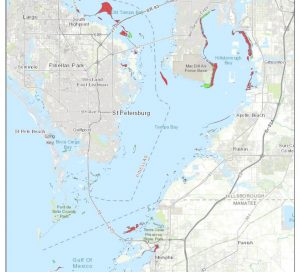 “The relatively low loss of seagrasses even in periods of higher-than-expected levels of nutrients and turbidity caused by excessive rainfall implies that seagrasses in Tampa Bay are somewhat resilient,” adds Ed Sherwood, director of the Tampa Bay Estuary Program (TBEP).
“The relatively low loss of seagrasses even in periods of higher-than-expected levels of nutrients and turbidity caused by excessive rainfall implies that seagrasses in Tampa Bay are somewhat resilient,” adds Ed Sherwood, director of the Tampa Bay Estuary Program (TBEP).
The survey, however, was taken prior to the red tide events in 2018 so any impacts from that event aren’t likely to be known until the 2020 study. While red tide is not specifically toxic to seagrasses, they can die or growth can be suppressed when any type of algae blocks sunlight from reaching the bay bottom.
Seagrasses Critical to Health of Bay
In 1991, when TBEP began charting a course to restore Tampa Bay, bay managers selected seagrasses as the “living resource” that would reflect their success.
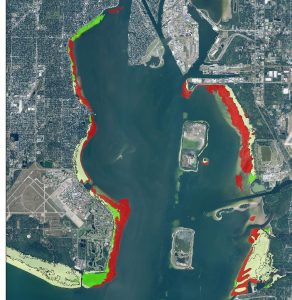
Seagrasses support up to 90% of commercial fish and shellfish at some point in their lives, making them critical to the health of the bay. Seagrasses also need clear water to survive. Excess nutrients fuel the growth of algae and threaten seagrass growth and survival.
Bay managers set a goal of 38,000 acres, based on maps showing where seagrasses were growing in the 1950s, minus those areas that had been dredged and filled for development. “When we first set that goal in the mid-1990s, I ran the numbers and figured we might hit it in 2030 – long after I retired,” said Holly Greening, who was TBEP’s director when the goal was first met in 2014. “It’s an accomplishment for everyone in Tampa Bay that we achieved that very ambitious goal much earlier than expected.”
Seagrasses remain a focus for the TBEP, but the SWFWMD study also looked at oyster habitat and tidal flats, both of which are important components of the Bay’s ecology. Additional oyster bed acreage has been identified, expanding the known extent detailed in the 2014 maps.
Learn more about seagrasses, why they’re important and the steps taken over the last 30 years that have helped them rebound in Tampa Bay by visiting Bay Soundings archives for June 2009.
Explore how seagrass throughout Tampa Bay have rebounded over the past few decades. The 2018 Seagrass extent will be added when it is publically available. Click on the double arrow on the top left to access the table of contents to turn layers on and off.
Seagrass is surveyed every few years, for map simplicity we selected a few for the online map.
